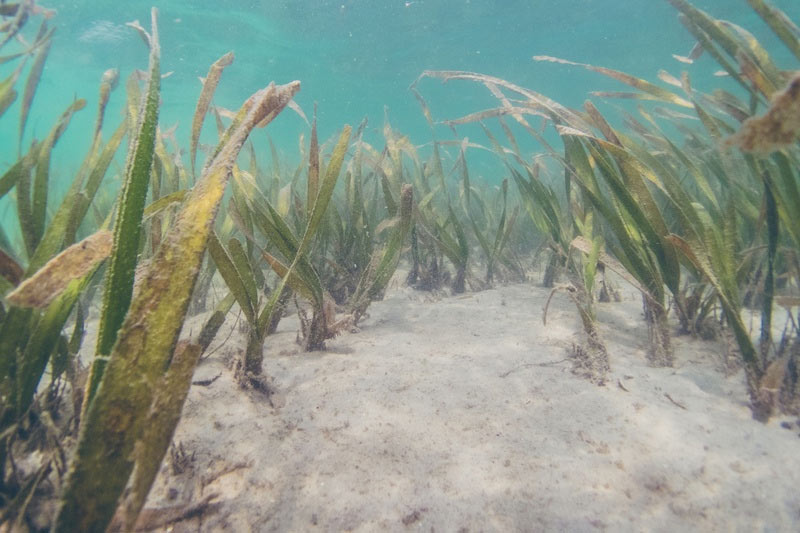
There’s an odd bunch of people with a strange sounding passion – a passion for seagrass. You’d think that anything with grass in its name might be boring, especially when compared to ecosystems like tropical rainforests, filled with birds of paradise or the vast savannas of Africa filled with elephants and migrating wildebeests. However, seagrass ecosystems hold a few surprises that might make you change your mind.
1. Seagrass buffers against ocean acidification.
Seagrass uses carbon from the surrounding water in order to photosynthesise and grow. As the carbon is taken out of the water and into the plant, the seas acidity decreases. This may protect coral reefs from bleaching and allows corals to have calcification rates that are up to 18% higher.
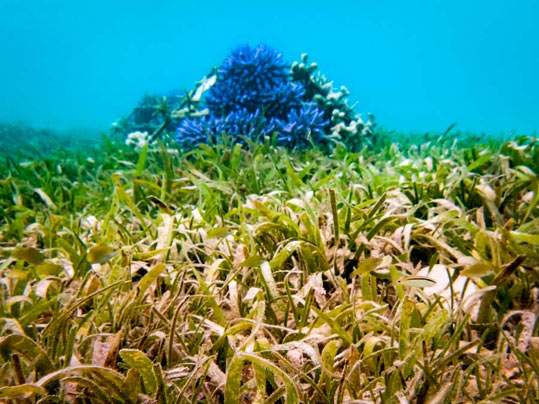
Seagrass helps coral to thrive.
2. Seagrass protects our coastline.
As well as helping coral reefs, seagrass also helps to stop our coastlines from being eroded away. Even when a turtle has got the munchies and nibbled the seagrass right down to the roots, or a storm has come through ripping some of the meadow away, then seagrass still protects our coastlines despite its damaged state. The remaining stumps and strands reduce the energy crashing on to our shore lines by slowing wave speeds.
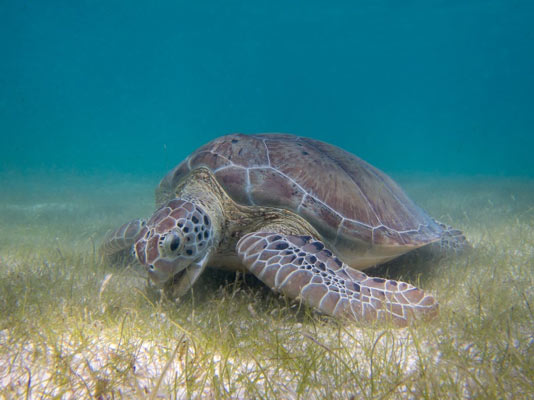
A green turtle munching on seagrass.
3. It’s still sensitive!
Just because seagrass keeps giving when damaged does not mean it is surviving. Seagrass restoration is a tricky and slow process. The conditions must be just right- when the surrounding bed is damaged the water will be flowing faster, taking with it any seeds or new shoots, as soon as the bed is damaged a vicious cycle of degradation begins.
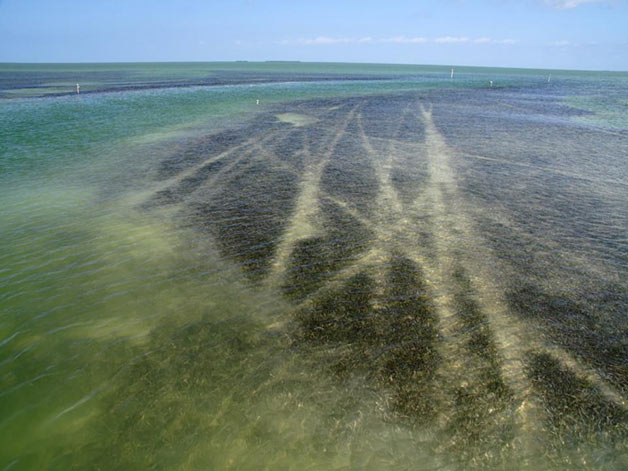
Scars in a meadow as a result of boat propellers ripping up the seagrass.
4. Endangered animals call seagrass home.
When our local shop has sold out of iceberg lettuce, then we can try something else green and leafy, maybe some spinach. A lot of seagrass residents don’t have this luxury however, for dugongs it’s munching on seagrass or a rumbling tummy. Many endangered seahorse species can relate to this reliance on seagrass as it’s their one safe home where they can blend in and hide in the scenery.
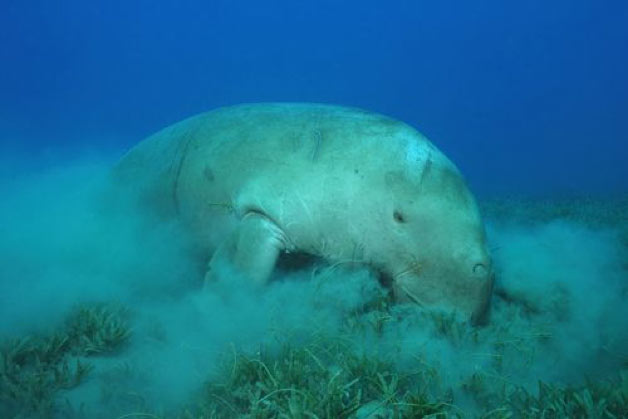
A grazing dugong.
5. It helps put food on our plates!
When a meadow is in good condition then it provides protection for juvenile fish, including those which are commercially important. The Walleye Pollock, for example, is one of the world’s top 10 most landed fishery species and it commonly relies on seagrass to be a safe haven for it’s young to grow big and strong before ending up on our plates. For some communities the plant itself is also an important food source; the Seri grind the seeds to make a porridge like substance and others eat a part of the plant called the rhizome, raw.
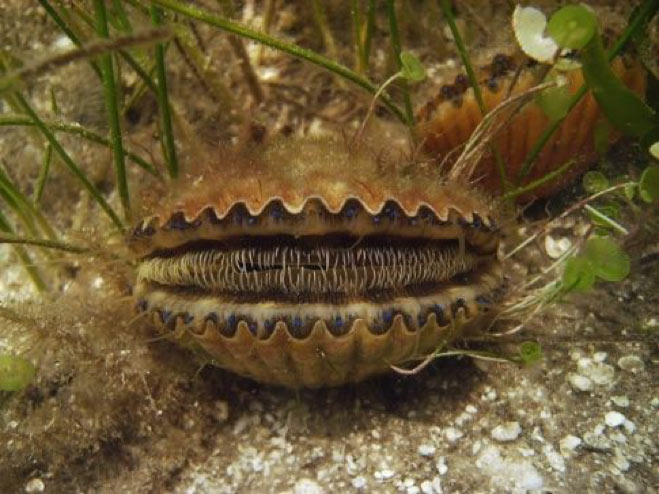
Florida Bay scallop growing strong in a seagrass bed.

